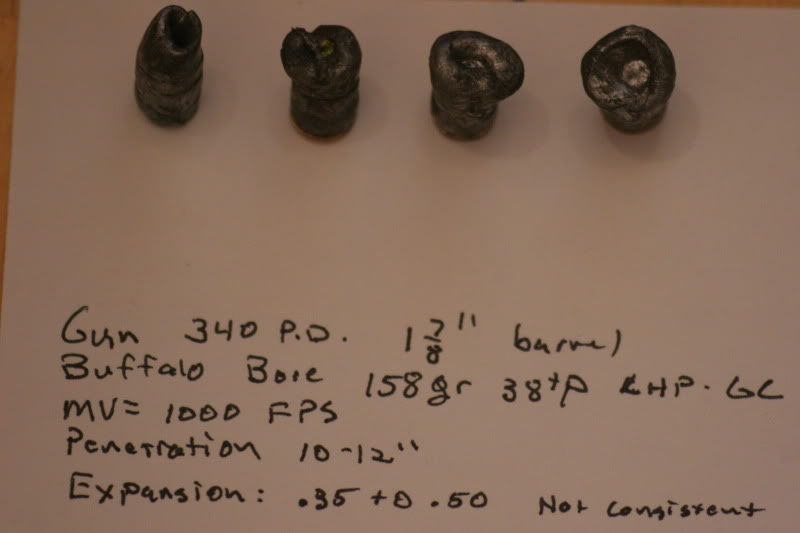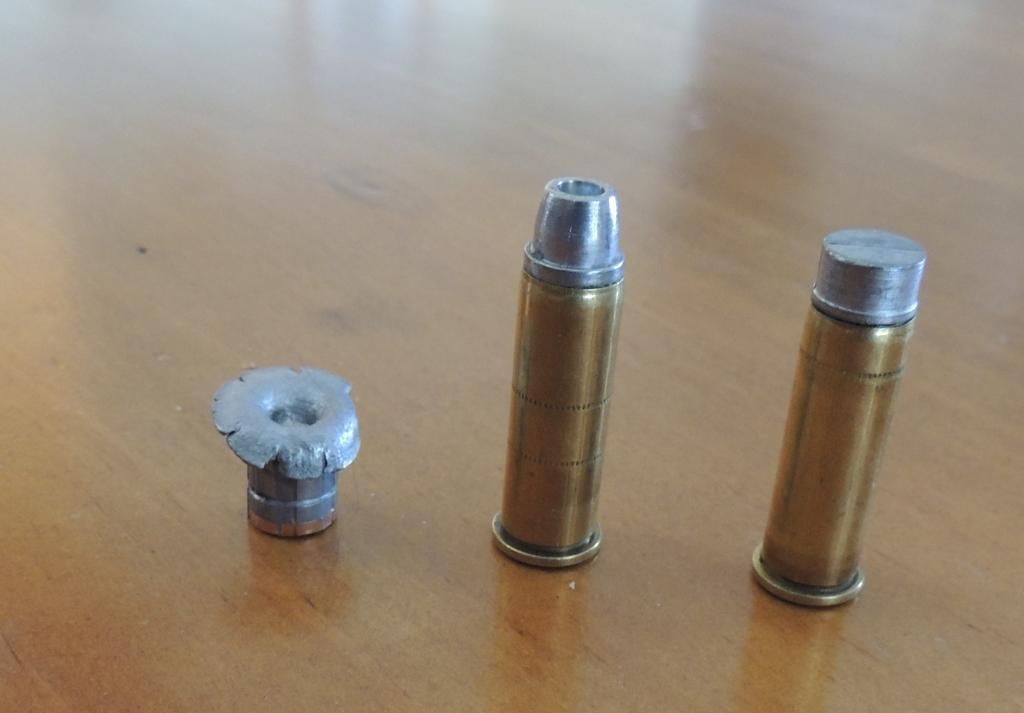For their price, you would think that they would be gold-plated!
For those that choose the old school 'FBI Load', i.e., 158 grain LSWC-HP, whether by Remington, Winchester, or Federal, that load has been a workhorse, ever since it's inception, and has worked in snubnose, and standard service revolvers. However, it IS a PLUS-P load.
There are those of us, who choose NOT to shoot anything PLUS-P, because it has worked for so long, before the idea of PLUS-P ammunition was around.
The loads that are chosen are:
1. A standard 148-grain full, either DEWC or HBHC wadcutter. Plainclothes policemen carried these in their duty snubs since the 1950's. The federal Civil Defense program, issued S and W Model 15's loaded with these. There is no hollow point in the design, therefore, there is no need to accelerate the bullet to a point where it would mechanically 'fail' on impact. The bullet is at maximum width, even when at rest inside the shell casing. Unlike a round nose bullet, it does NOT 'push' material out of the way, as it passes through, but acts as a 'cookie cutter' would, instead. The recoil is the least of any load shot in a .38 Special revolver, allowing quick return on target for a second shot. Muzzle flash is quite less, as is the noise volume. They are accurate to a distance of 50 yards, and still employed in major competitions today.
2. A standard non-hollow point 158-grain semi wadcutter. They have a truncated nose, which gives a smaller forward meplate (same velocity, more force, on a smaller impact point), and also a shoulder, as the full wadcutter is designed to have. A little more in the same terminal mechanics as the wadcutter, and a little more weight and accuracy. Same low flash, lower noise, lower recoil.
It is my understanding, that the whole hollow point business, is somethiing that you 'have to vote on it first, then see if they work as advertised'.
With either a full wadcutter, or a semi wadcutter, they work as they are designed, without having to 'structurally fail' to 'work'.
Lastly, for those that cannot handle the recoil produced by PLUS-P ammunition, or a physical condition, that would not be conducive to such an explosive load, the wadcutter and semi wadcutter loads are the best choice.


